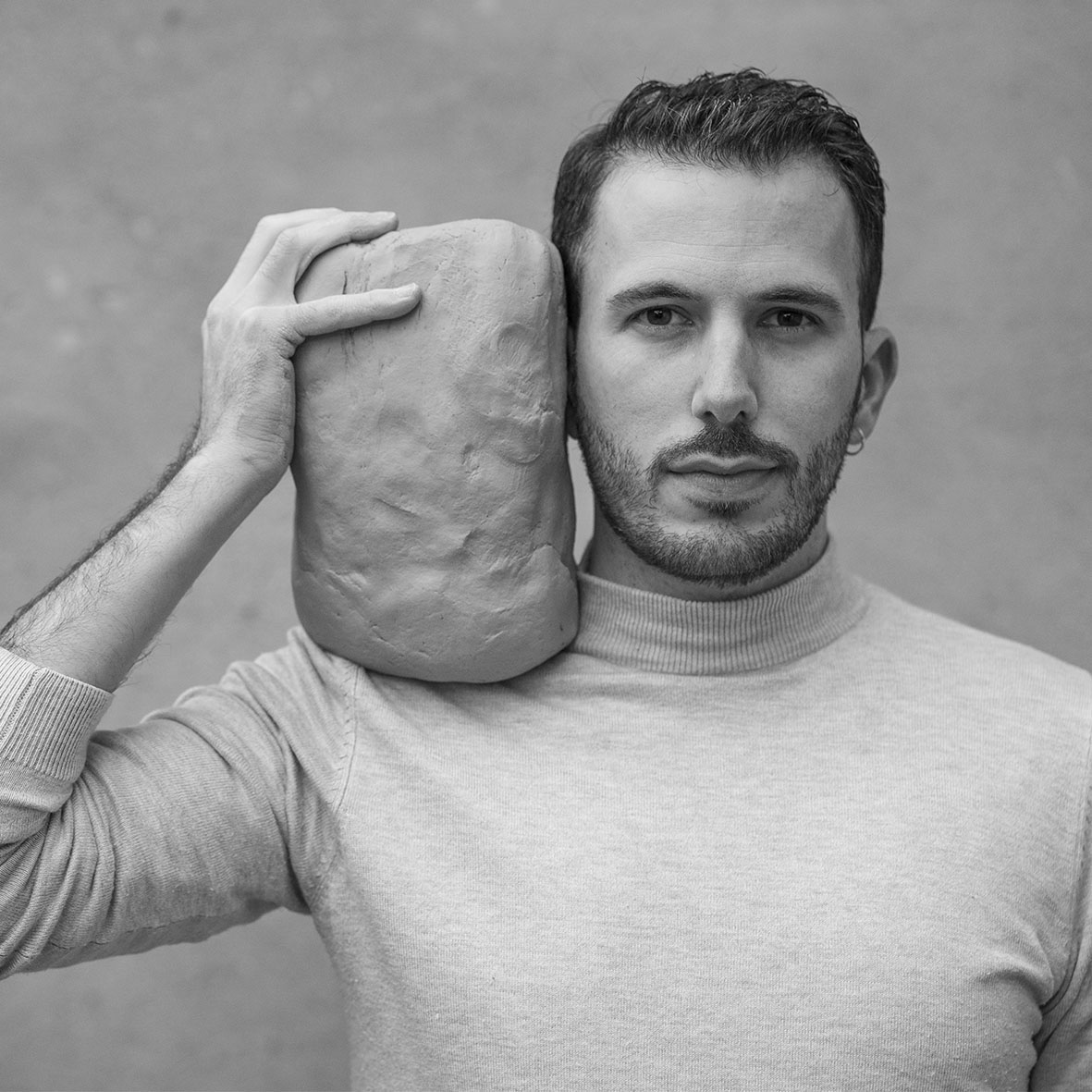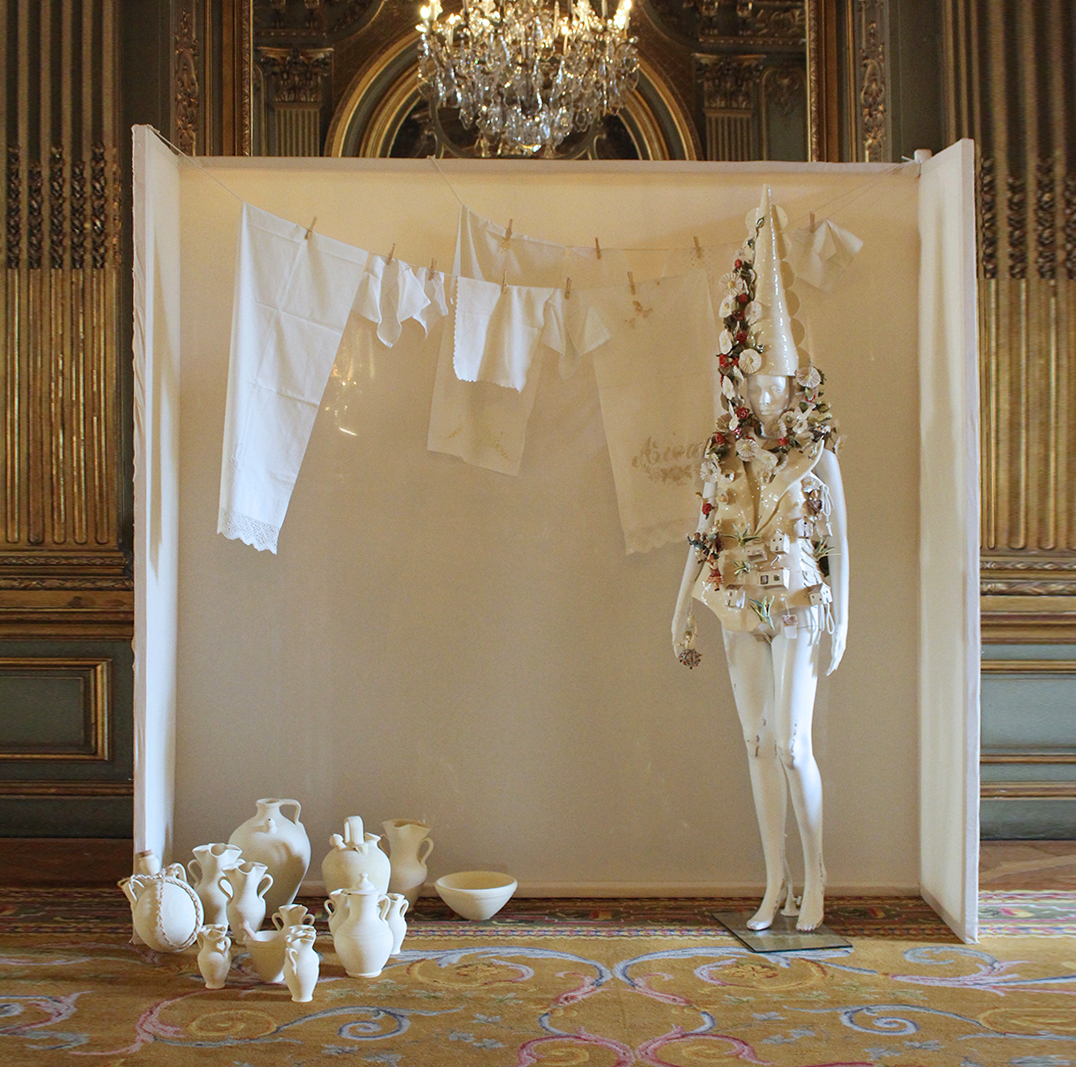 eiDesign selection
eiDesign selection
Ceramic body by Leandro Cano
Ceramic bodysuit and hat by Spanish designer Leandro Cano
–
 eiDesign selection
eiDesign selection
The Limosna bodysuit is the work of Luis Torres together with the Spanish designer Leandro Cano, within his OFRENDA fashion-art collection, presented at Paris Fashion Week 2019. The ceramic artwork is made based on the style of the fashion designer and his collection, inspired by the appearance of flamenco in El Sacromonte in Granada, Spain.
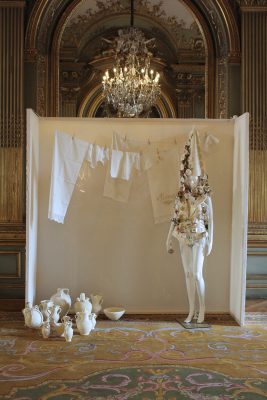
The artwork tells a story. Andalusian villages are a haven of peace for many. But years ago, in the memories of Luis Torres or even his parents or grandparents, when the internet did not exist, there was not so much technology and globalization had not yet connected them so much with the outside, they were a perfect bubble for children to develop in full happiness and tranquility.
This work contains all the elements that come out of those memories of Luis Torres and Leandro Cano, both from small villages in southern Spain. The vegetation that withstands the heat: pitas, prickly pears, etc. The colorful field in spring thanks to the poppies, daisies or lilies. The patios decorated with pots and carnations or geraniums, as today they are admired in the festival of Patios of Cordova. Everything gave color to the little mounds of whitewashed houses arranged loosely along a hill. An Andalusian village. The main life of the streets consisted of the children who played while the laborers work or their grandparents prepare a snack for them. A sandwich or a hole of bread, not only for the grandchildren but also for all the children who accompanied them when their grandmother yelled them so that they could go for it. The games, children’s games, coming from the imagination. They were not in any device. A traditional toy at most. Music, singing and dancing were often the game itself. If the bread hole made you thirsty, you should drink from a “botijo” (a traditional Spanish pottery water pitcher). Children playing without being aware of anything else, but having very clear principles, values, and sometimes the spirituality they were told to follow at home.
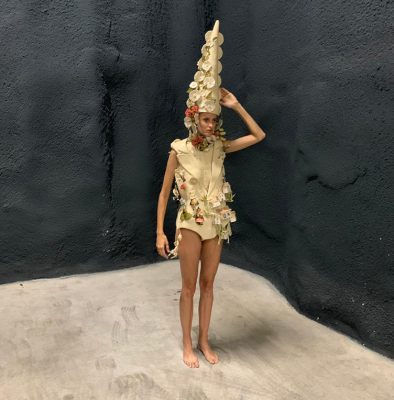
The entire artwork was modeled by hand, to measure, in stoneware and high-fired with ceramic glazes.
Both the shapes and the color make up a harmonious set due to the symmetry and the neutral beige tone of all the pieces of the body and the hat. The figures provide polychromy and contrast, although an attempt has been made to maintain a range of natural colors, not too vivid, to counteract the natural shine of the ceramic and so that the sense of history behind the design, the concept of memory from children’s play of decades past, is not lost.
The plant motifs are those of Andalusia, both those found in the wild in the countryside (prickly pears, pitas, daisies), and those that normally adorn the flowerpots in the patios (carnations).
The white houses, with local clay tile roofs, some of them a bit dilapidated and with moss or bushes on the roofs. Small windows, thick walls and whitewashed facades are also elements typical of the south.
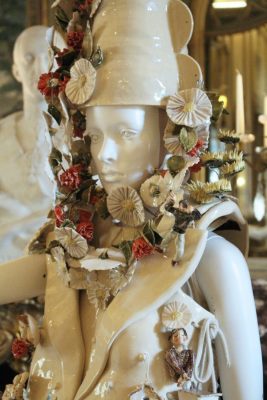
The children have torsion postures simulating flamenco dances and games. Their clothes, with elements of traditional Andalusian fashion: ruffles, flared skirts, polka dots, short vests …
Elements of the daily life of the Andalusian towns appear, the bread and the plate on the table when sitting down to eat. The jug, in this case with the typical color and shape of the white “botijo” of La Rambla (Cordova), Luis Torres’ village, as a tribute by the author to the pottery tradition of his town.
The grandma is the caretaker of all of them. She is dressed in a shawl, a manila shawl, dark clothes that cover her almost completely, probably because she is in mourning.



